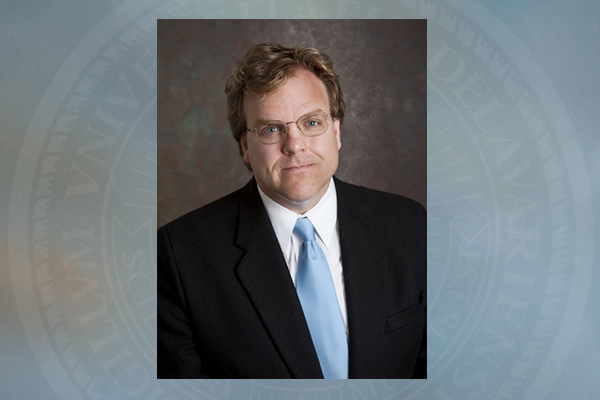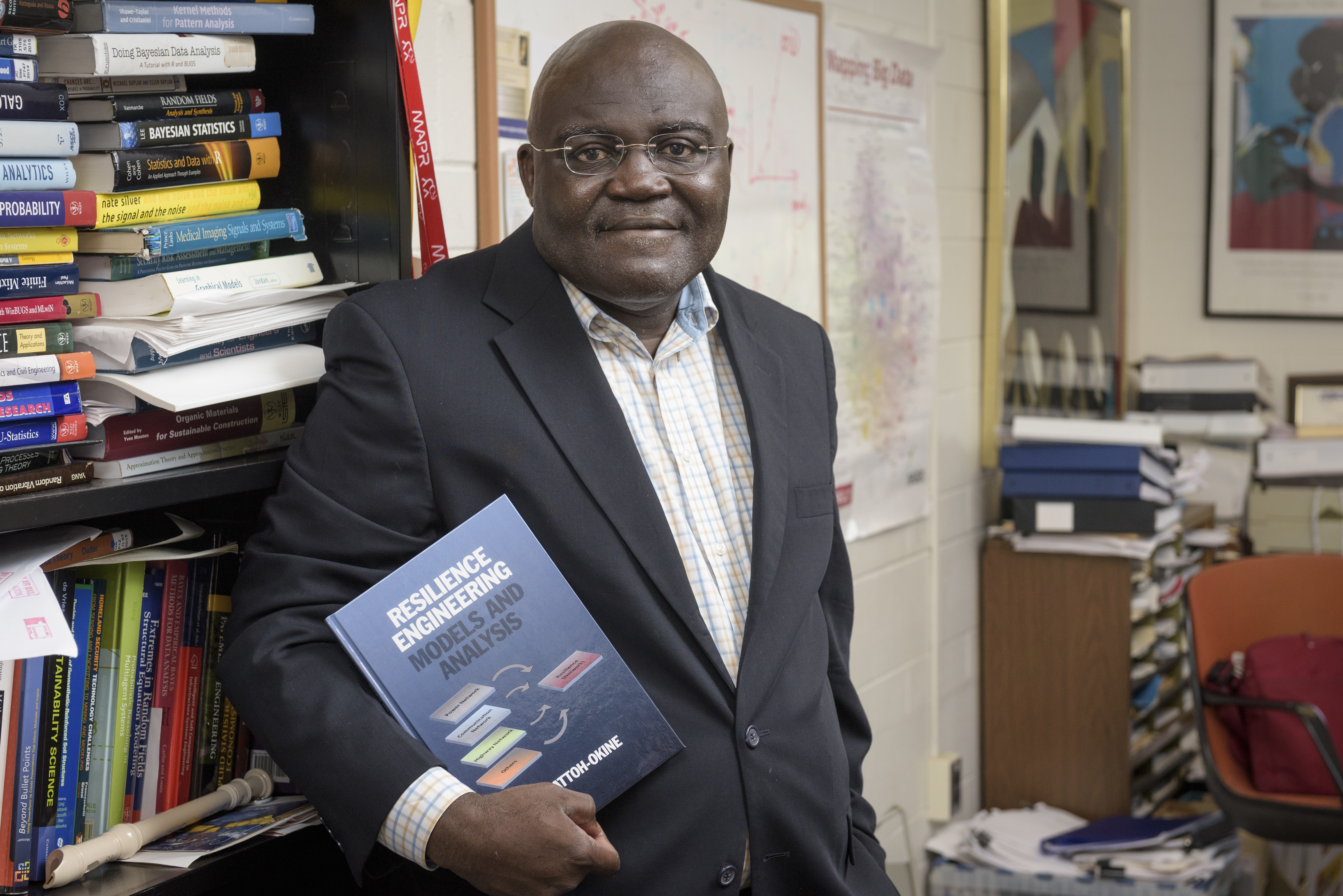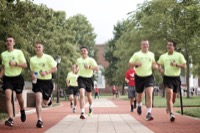


Lost and found
UD's McKenna uncovers photographic treasure trove of baseball history
9:10 a.m., April 9, 2014--For a literature scholar whose specialty is British and Irish modernism, the University of Delaware’s Bernard McKenna has been getting a lot of attention lately among fans — and historians — of a very American pastime.
McKenna, an associate professor in the Department of English and an Orioles fan who grew up near Baltimore’s old Memorial Stadium, has discovered photographic evidence pinpointing for the first time the location of one of the city’s Negro League ballparks. The stadium, Maryland Baseball Park, was the home field of the Baltimore Black Sox from 1921-32 and hosted games in the 1924 and 1926 Negro League World Series.
People Stories
'Resilience Engineering'
Reviresco June run
And that discovery was just the beginning. McKenna continued exploring the treasure trove of old photos he located in various electronic databases and went on to identify the location of another Negro League ballpark and, more recently, what may be the only known photo of the legendary Satchel Paige wearing a Baltimore uniform.
McKenna’s baseball research began, quite frankly, when he was killing time between meetings in a day that was filled with appointments. A lifelong baseball fan, he was familiar with Baltimore’s best-known Negro League team, the Elite (rhymes with “bright”) Giants — a team whose lineup once included future Hall of Famer Roy Campanella among other great players — and with the lesser-known Black Sox.
“A lot of people have heard of the Elite Giants but not the Black Sox,” he said. “But the Black Sox won the 1929 championship, and their 1930 team, with Satchel Paige pitching, was considered one of the best teams ever [although there was no championship game that year]. And nobody today knew where they played.”
McKenna started perusing the Internet. Having done literary research, he said, he was familiar with the Special Collections departments in libraries, and he began looking in those collections for such keywords as “aerial photography, Baltimore.” The search yielded a series of photos shot in 1926 by the Maryland Port Administration and digitized in 2011 by Johns Hopkins University. Using his personal familiarity with Baltimore, he was able to make use of natural and manmade landmarks to zero in on specific neighborhoods and streets.
Baseball historians had thought that Maryland Park was at Russell and Bush streets, but when McKenna spotted that intersection on the 1926 aerial photo, no ball field could be detected even when he enlarged the image. He started tracing Russell Street south and, “There it is!” he said, pointing to a corner of the computer screen. “It’s clearly a ballpark, seating about 12,000 people. It was built of wood, and the summer humidity caused it to deteriorate rapidly over the years, but when it was built in 1920 it was considered a showpiece, a state-of-the-art ballpark.”
The stadium, also known as Black Sox Park, was the last privately financed ballpark in the city and, until Oriole Park at Camden Yards opened in 1992, it was the last one built solely for baseball.
Among the port authority photographs, not all the slides survived, McKenna said. “So it’s a miracle that this one did,” he said. “And the clarity is remarkable.”
The next mystery he set out to solve was finding the location of Westport Park, which the B&O Railroad built for its employees and rented out to the Black Sox, who played there from 1917-1920, before Maryland Park opened. McKenna again began tracking the aerial photos south, and about a half-mile away, he spotted another ball field.
By comparing the architecture visible in the aerial photos with team photos taken in Westport Park, he determined that the second field he had found was indeed Westport. McKenna found photos in a variety of collections, including those from the University of Maryland Baltimore County, the Maryland Historical Society and the Baltimore Afro-American newspaper. The lineups of players and the styles of their uniforms helped date the locations where those photos were taken.
More recently, McKenna found a 1930 Black Sox photo in the Afro-American archives that featured five players standing in a row in Maryland Park. On the far left, holding a baseball, is Satchel Paige. The caption misspelled his last name as “Page,” which may be why the photo apparently was never publicized earlier. McKenna believes it may be the only image of him in a Baltimore uniform; Paige had an astonishingly long career and played for many teams, but only stayed one season in Baltimore.
The era of segregated baseball and its history in Baltimore may become the subject of McKenna’s next book. He said he wants to write a scholarly work, and the subject of racism in that city is an integral part of the history.
In 1911, Baltimore enacted strict segregationist laws, and the city was in many ways “a racial cauldron,” McKenna said, “but I can’t find one account of a racial incident on the ball field in the city.” In fact, he said, Negro League games drew a racially mixed fan base, and the sports pages of the pro-segregation Sun newspapers spoke highly of the professionalism of African American athletes.
“You can’t talk about baseball without talking about civil rights,” McKenna said.
His initial research and the discovery of Maryland Park have attracted the attention of baseball historians. To read more and to view photos, visit the Deadball Baseball website by author David Stinson.
Article by Ann Manser
Photo by Evan Krape









